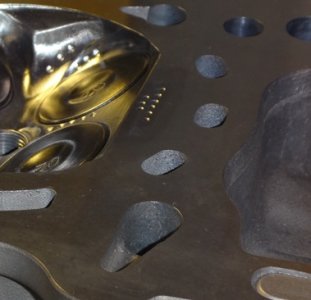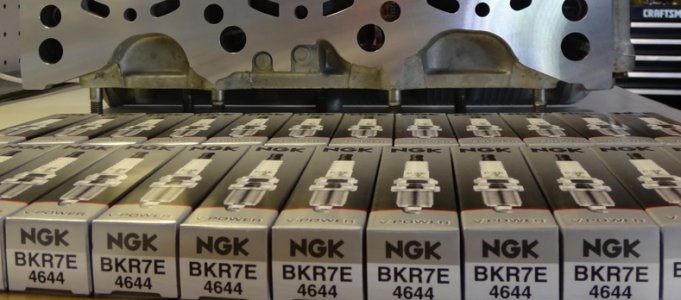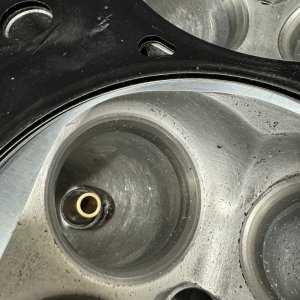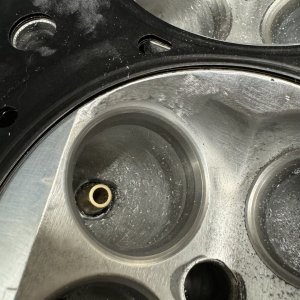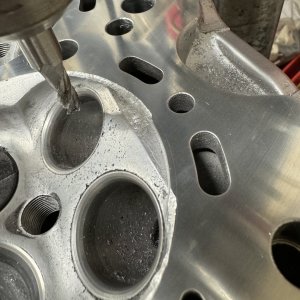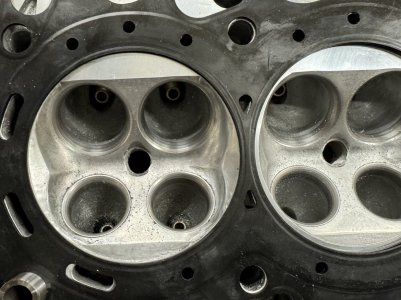Sorry it took me a long time to get back to you on your questions about dimpling.
Sorry about all the troubles too. After I ditched the first "machinist" I got lucky with the other ones doing my crank, heads, block, and rods. I had a great experience with Benson and even used to keep in touch with him after I got this back on the road.
My build 12 years ago now (wow) didn't get crazy with cams and valves as I wanted to be able to play around with both N/A and F/I, and I have. So, I optimized what the Honda engineers provided and focused on improving combustion efficiency. The pent roof combustion chamber is the standard for four valve heads, but not really a good design especially the higher CR you go. Over my almost 20 years here, I kept pics of NSX heads as they were removed, and noted the burn patterns and areas of high carbon. That's where I focused on dimpling. The pic below is the pattern I came up with near the intake valves. I re-welded the heads near the exhaust valves with some special features and I'm not going to show that part to the internet.
Same thing with the pistons. Before I embarked on this journey, I just asked SOS to send me their Wiseco pistons and ceramic coat the domes. As I got involved in the rebuild and getting into combustion efficiency, I ended up ditching those and having Wiseco do a special batch with less generous valve cutouts, etc. Then those were dimpled and ceramic coated (sorry, not showing those either). The dimple sizes and patterns I did on the head picture should give you an idea of what I did on the pistons too. Don't go crazy obviously as that can hurt you.
The before baseline dyno with my custom AEM tune was 255 RWHP. Afterwards with the same intake, exhaust, but this new engine with same valves, cams, and OEM 10.2:1 static CR, yielded 310 RWHP and that was with reduced timing as it was no longer necessary (I have another thread on here talking about that too).
Oh - While you have the heads off you may as well index a bunch of plugs to orient the ground strap where you want (that's a whole other discussion)....
You can spend a lot of time thinking about this stuff and obviously working on it. My $0.02 12 years later is don't get too deep into analysis paralysis. Good luck and hang in there. At least you can drive your car while doing this engine build. I had to stare at mine lifted in the air for about a year....
